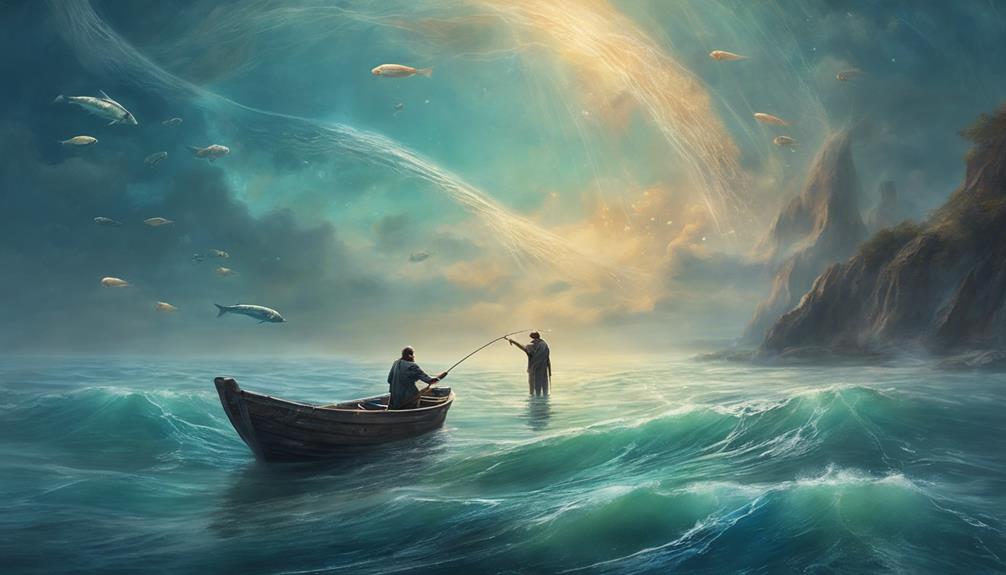Imagine casting your line into the vast ocean like a thread connecting you to the underwater world. Have you ever thought about the impact of your fishing method on marine life?
Line fishing offers a gentle touch on the environment compared to other more invasive techniques. But why exactly should you consider line fishing for marine conservation?
The answer lies in its ability to preserve marine ecosystems in a way that benefits both fish populations and the environment.
Key Takeaways
- Reduces bycatch, preserving marine ecosystems
- Supports sustainable practices and fish populations
- Minimizes impact on non-targeted species
- Contributes to long-term marine health
Benefits of Hand Lining in Conservation
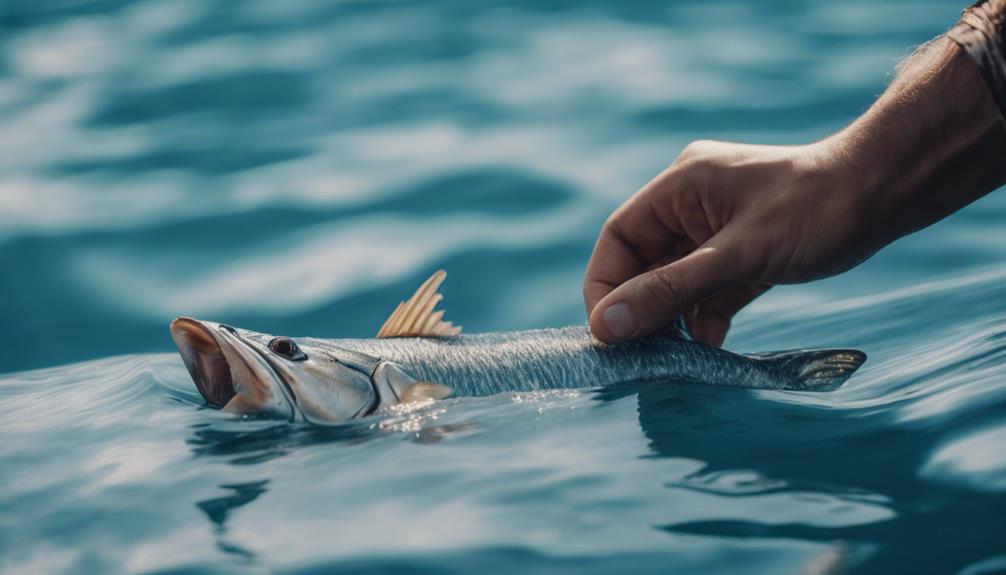
Hand lining offers significant benefits for marine conservation by reducing bycatch and minimizing the impact on non-targeted species. When using a fishing line instead of nets, you engage in selective fishing, targeting specific species while avoiding overfished populations. This method not only helps preserve marine ecosystems but also promotes sustainable practices.
By controlling the amount of fishing effort with hand lines, you contribute to the long-term health of marine environments. The simplicity of hand lining reduces the carbon footprint associated with commercial fishing methods, making it a more environmentally friendly option.
Embracing this traditional technique can lead to a better balance between human consumption and the protection of marine biodiversity.
Sustainable Practices in Line Fishing
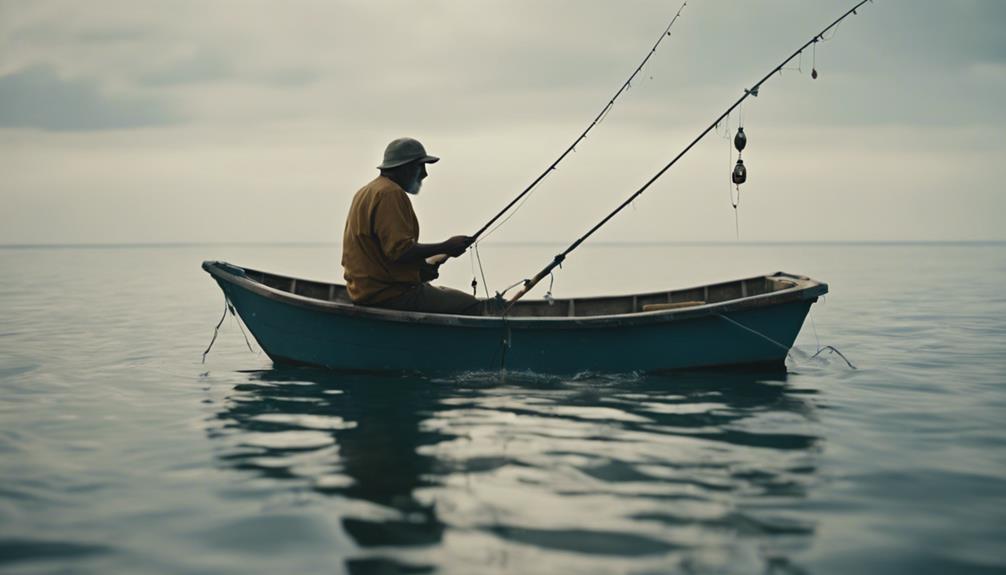
In sustainable line fishing practices, precision targeting of specific fish species helps minimize the impact on marine ecosystems. By utilizing selective fishing methods like hook-and-line, fishermen can avoid catching unintended species and reduce bycatch. This approach promotes biodiversity conservation and supports the long-term health of marine environments.
Compared to more harmful fishing techniques, line fishing has lower environmental impacts and contributes to sustainable seafood harvesting. Embracing sustainable fishing practices not only helps maintain fish populations but also plays a critical role in safeguarding the delicate balance of marine ecosystems.
Next, let's explore into the specific impact of sustainable line fishing on marine ecosystems to further understand its importance in marine conservation.
Impact on Marine Ecosystems

To understand the impact of sustainable line fishing on marine ecosystems, consider how overfishing disrupts food chains and biodiversity, while bycatch from unsustainable practices harms non-target species and habitats. Sustainable fishing practices, such as line fishing, play an essential role in preserving marine ecosystems. Here are four ways sustainable line fishing positively impacts marine environments:
- Preserves Fish Populations: By reducing overfishing, line fishing helps maintain healthy fish populations.
- Protects Marine Ecosystems: Sustainable fishing methods like line fishing help safeguard the delicate balance of marine ecosystems.
- Minimizes Bycatch: Line fishing techniques help minimize the accidental capture of non-target species, reducing harm to marine biodiversity.
- Promotes Sustainability: Choosing line fishing supports sustainable practices that benefit both marine life and fishing communities.
Preserving Fish Populations With Hand Lining
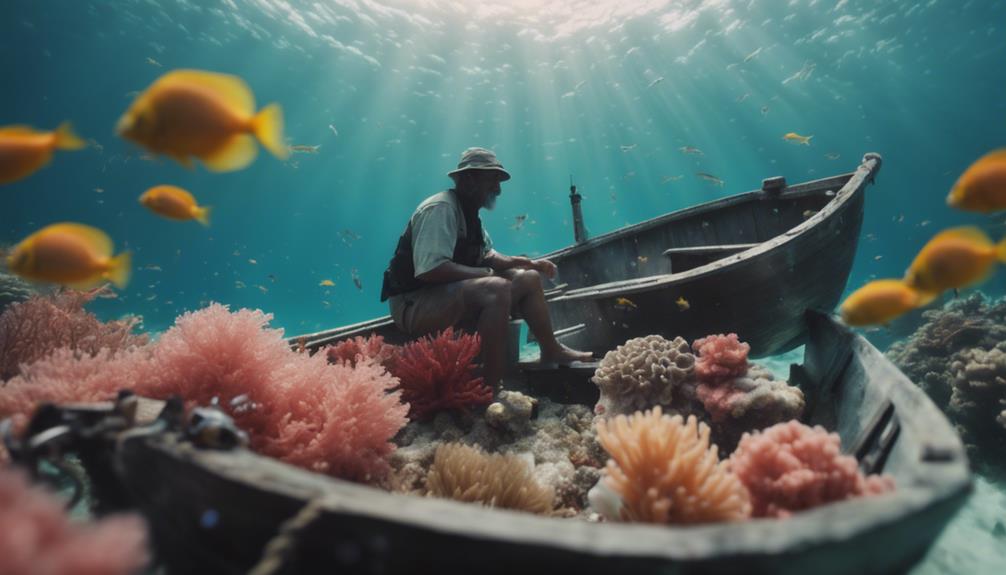
For preserving fish populations sustainably, embracing traditional hand lining techniques is a key strategy. Hand lining allows fishermen to target specific fish species, reducing bycatch and safeguarding non-targeted marine life. This sustainable fishing practice is more environmentally friendly than industrial methods, promoting the long-term health of fish populations.
With minimal equipment required, hand lining minimizes its impact on the environment compared to modern fishing techniques. By using hand lines, fishermen can better control their catch, ensuring the survival of juvenile and non-targeted fish. Additionally, fish caught through hand lining are often of higher quality, commanding better prices in the market and encouraging coastal communities to adopt more sustainable fishing practices.
Promoting Ethical Fishing Methods
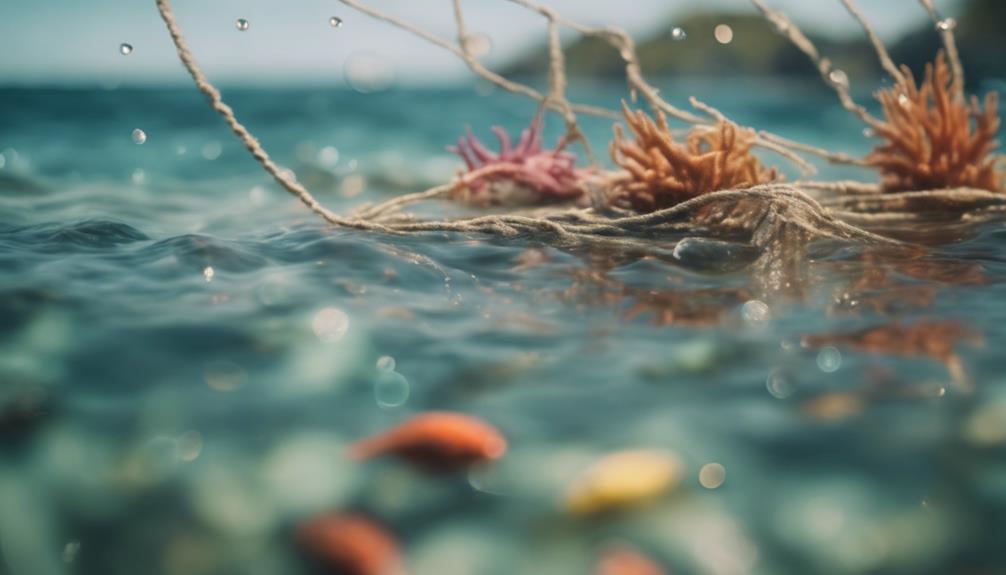
Embrace ethical fishing methods, such as line fishing, to support marine conservation efforts and protect vulnerable marine species. Here are four reasons why promoting ethical fishing methods is vital for marine conservation:
- Reducing Bycatch: Ethical methods like line fishing help minimize harm to non-target species.
- Selective Fishing: Line fishing allows for targeting specific species, avoiding overfishing vulnerable populations.
- Supporting Biodiversity: Sustainable methods, such as line fishing, help marine ecosystems recover and thrive.
- Preserving Habitat: Ethical fishing practices maintain the balance of marine food chains and habitat integrity.
Choosing line fishing promotes responsible stewardship of ocean resources, ensuring long-term sustainability and the protection of marine life.
Conclusion
So why choose line fishing for marine conservation?
By opting for natural twine materials, properly disposing of fishing lines, and recycling used monofilament, you can make a big impact on protecting marine life and habitats.
Hand lining promotes sustainable practices, preserves fish populations, and encourages ethical fishing methods.
Next time you head out to fish, consider the benefits of line fishing for marine conservation and do your part to make a difference in our oceans.
👨👩👧👦 Dwight’s a married dad of 4 who loves to cast a line 🎣 into both fresh and salt waters. His heart belongs to his family and the sea. 🌊 #FamilyMan #FishingLife #DadOf4 🐟✨

